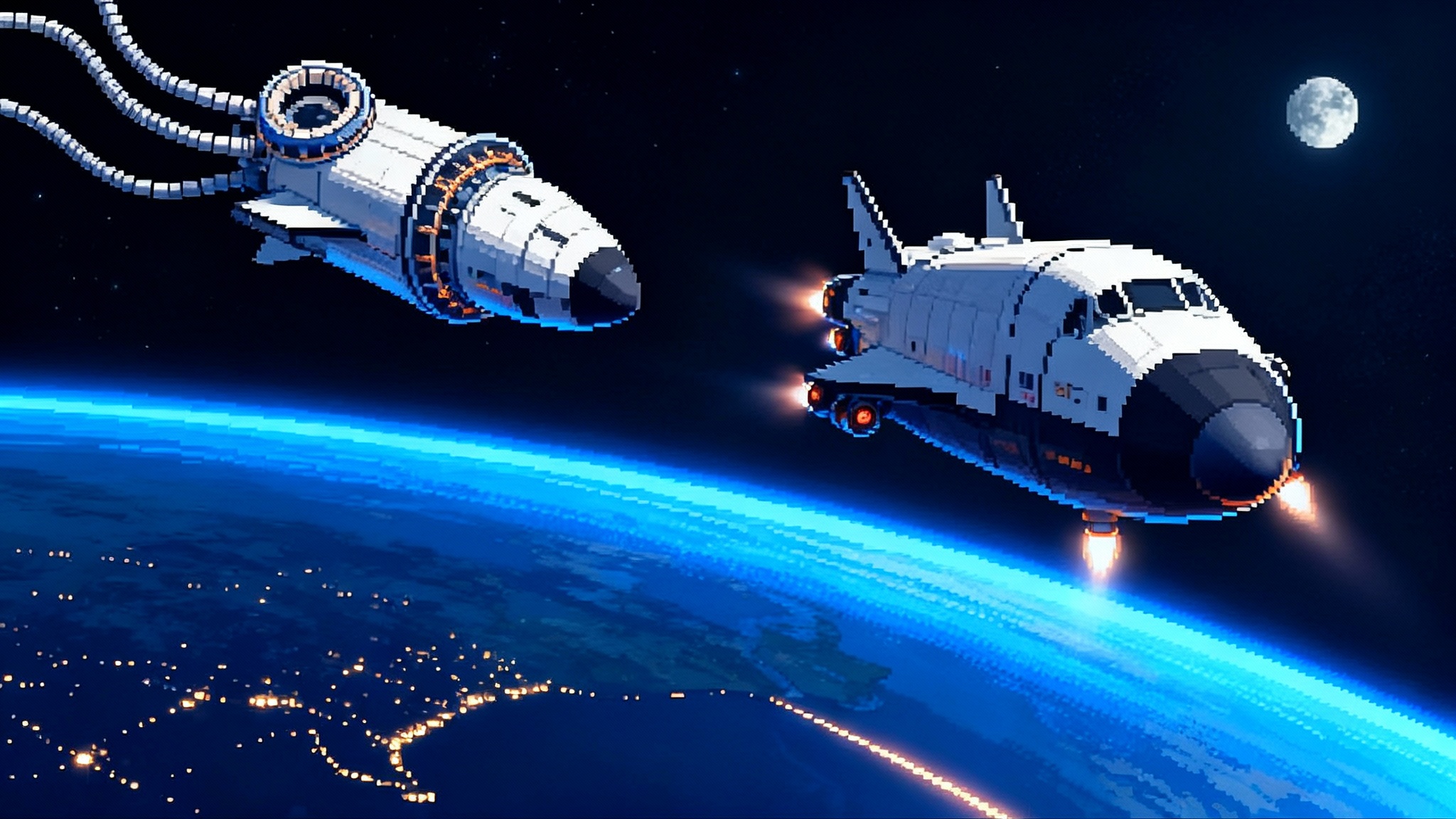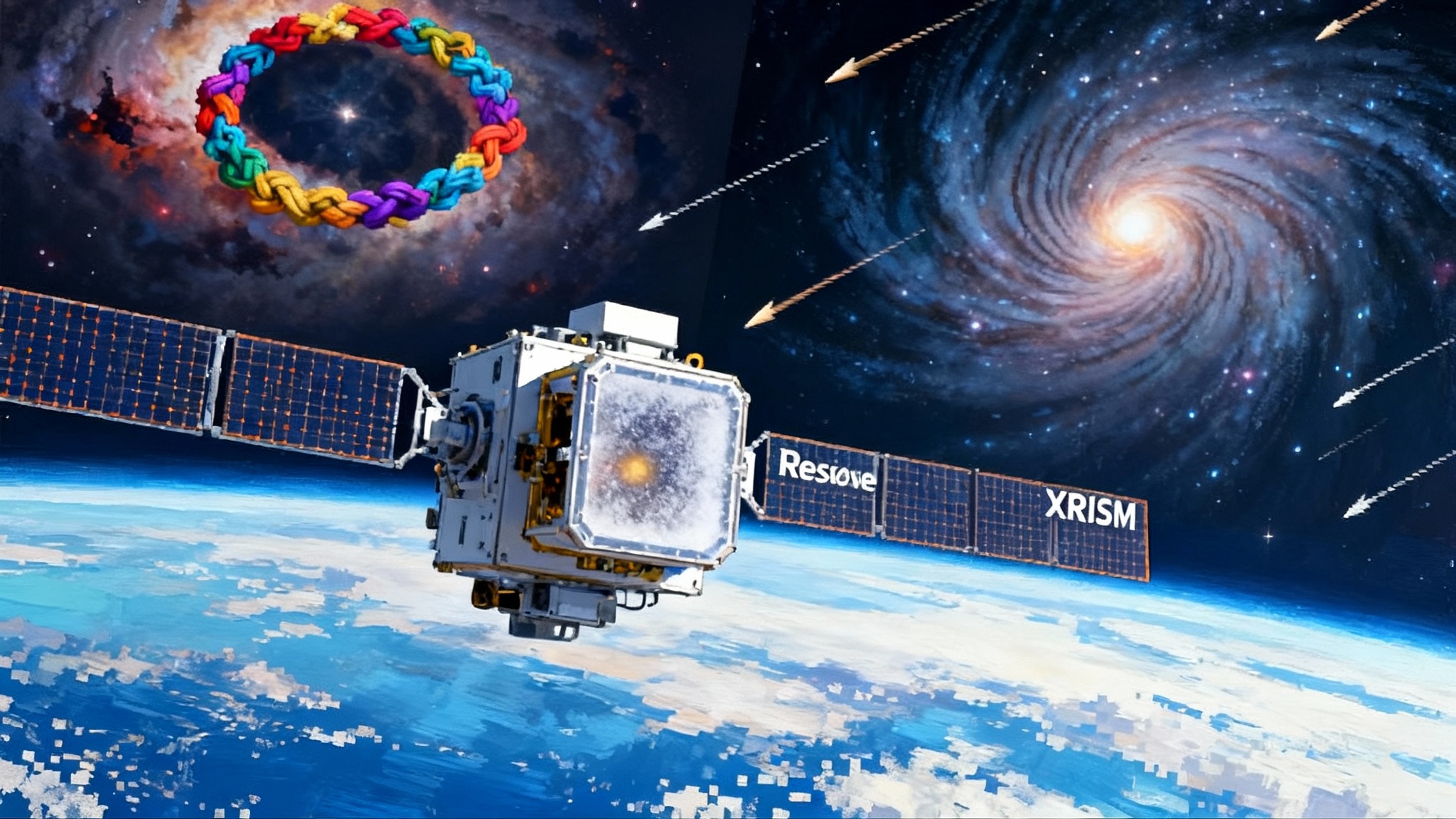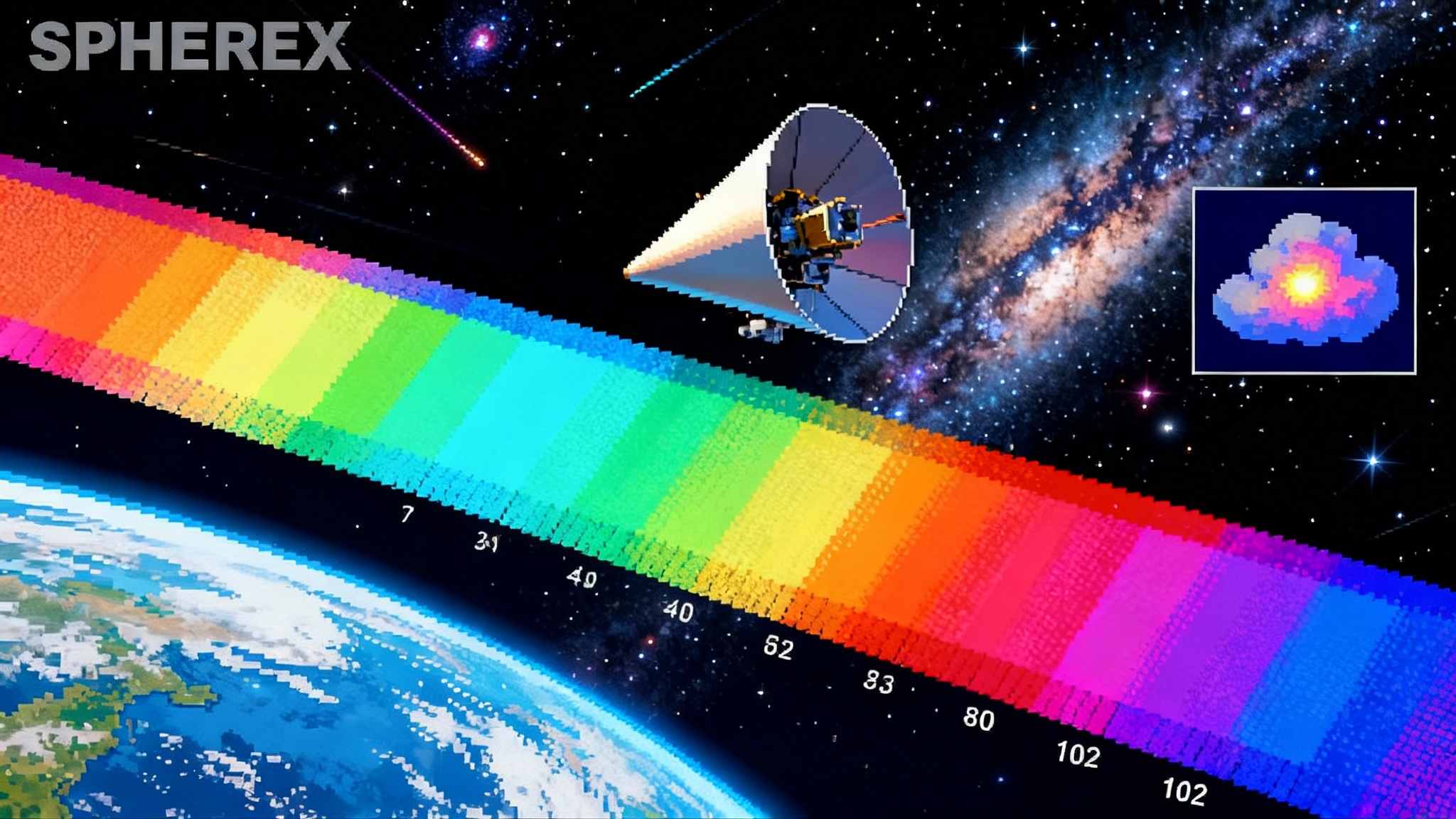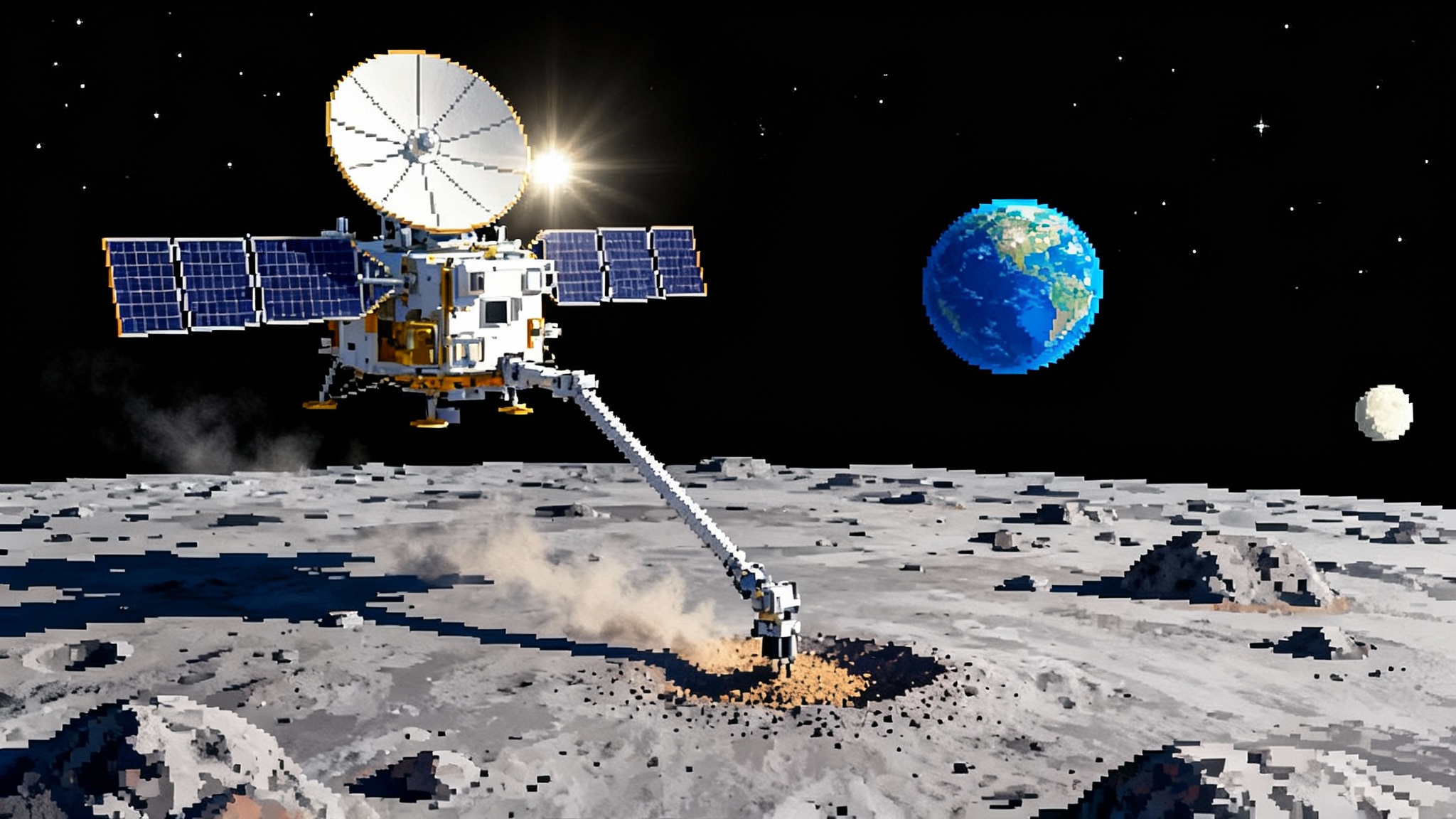Hera’s Mars flyby sets up the first close-up of a deflected asteroid
On March 12, 2025, ESA's Hera skimmed past Mars to line up a late 2026 rendezvous with Dimorphos, the asteroid nudged by DART. Here is how Hera will turn a cinematic hit into a calibrated planetary defense playbook.

The year planetary defense changed from stunt to standard
On March 12, 2025, ESA's Hera spacecraft skimmed about 5,000 kilometers above Mars and threaded within hundreds of kilometers of the small moon Deimos. The gravity assist bent Hera's path toward the Didymos-Dimorphos binary, saved propellant, and doubled as a full-dress rehearsal for its cameras and sensors. ESA treated the event as a milestone because it marked the pivot from cruise to calibration, using a real planetary target to tune the tools it will carry to our first deflected asteroid. ESA's Mars flyby brief captures the choreography and the distances involved.
That Mars encounter matters far beyond flight dynamics. It begins a tight sequence of trajectory tune ups and instrument checkouts through 2025 and early 2026, setting the stage for Hera's arrival in late 2026. When Hera reaches the Didymos system, it will do something no mission has ever done: perform a forensic audit of a kinetic impact deflection in space, in situ, with a full sensor suite and two companion CubeSats. The goal is not another headline. The goal is a playbook.
DART's proof and Hera's calibration
In 2022 NASA's Double Asteroid Redirection Test slammed a spacecraft into Dimorphos, the smaller moon of the Didymos pair. Telescopes recorded a dramatic dust plume and, crucially, a change in Dimorphos's orbit that exceeded expectations. Follow on analysis found that the asteroid's orbital period shortened by roughly 33 minutes and that its shape and orbital eccentricity changed as well. In other words, we did not just nudge a rock. We reshaped a rubble pile and altered its dance with its partner. NASA's technical summary lays out the shift in period and geometry in plain numbers. JPL's study on orbit and shape change is the best starting point.
But DART was designed as a clean experiment, not a lab with rulers and gauges. We know the outcome was large. We do not yet have a precise momentum transfer coefficient, beta, across plausible asteroid types, or a materials model that can be plugged into a mission design tool and insurance spreadsheet with confidence. Hera exists to close that gap.
A simple metaphor helps. Imagine tapping a chalk dusty pool ball. The cue does not just push the ball forward. The chalk sprays off and carries extra momentum, so the ball travels farther than a clean hit would suggest. DART's ejecta acted like that chalk, adding momentum beyond the mass and speed of the spacecraft itself. To convert that insight into a number anyone can reuse, you must measure the ball's mass, internal structure, surface strength, and the true size and shape of the scar. That is Hera's job.
The toolkit: what each sensor will do and why it matters
Planetary defense is not a single technique. It is a chain of assumptions that stretches from telescopes to target selection to impact geometry to post maneuver verification. Hera's instruments were chosen to test each link.
On the Hera mothership
- Asteroid Framing Camera built by Jena Optronik. This is the mission's workhorse imager. It will map Didymos and Dimorphos at progressively higher resolution, locate boulders and fractures, and measure the DART crater. The crater's diameter and depth, plus the ejecta blanket, feed directly into impact scaling laws that determine beta.
- Planetary Altimeter a laser rangefinder. Lidar returns turn mosaics into shape models and turn apparent shadows into measured slopes. They provide precise topography for volume estimates of the crater and for navigation around a tiny, weak gravity system.
- Thermal Infrared Imager contributed by the Japan Aerospace Exploration Agency. Thermal inertia is a proxy for grain size and regolith thickness. Measuring how quickly surfaces heat and cool tells scientists whether Dimorphos behaves like a sandbank or a slab. That affects ejecta production and long term drift forces, especially the subtle but important Yarkovsky effect that sunlight induces.
- HyperScout H hyperspectral imager from cosine Research. Spectral fingerprints reveal compositional patches. If the crater exposes material unlike the surface veneer, Hera can map what DART excavated. That helps separate what the asteroid was from what the impact did.
- Radio Science Experiment. By tracking Hera's radio signal with deep space antennas, and by ranging to the CubeSats, mission scientists will solve for the masses and gravity fields of Didymos and Dimorphos. Mass and density are the denominators in every momentum equation.
Juventas: the interior detective
Juventas developed by GomSpace with European partners, is a 6 unit CubeSat carrying JuRa, a low frequency radar, and GRASS, a tiny three axis gravimeter developed by the Royal Observatory of Belgium with EMXYS. The radar will sound tens of meters beneath the surface, an achievable depth because Dimorphos is small and likely porous. Think of JuRa as an ultrasound for a gravel bag in microgravity. If the interior is a uniform matrix of fist sized rocks, radar echoes will look different than if there are voids or buried boulders.
Juventas will first orbit very slowly, then attempt a gentle contact with Dimorphos to record local gravity and mechanical response at the surface. That direct gravity reading will be the first of its kind on an asteroid this small. Knowing interior porosity and layering allows engineers to predict how future impactors will couple energy into different targets, and whether a given kinetic strike risks fragmenting an object rather than pushing it.
Milani: the composition and dust scout
Milani built by Tyvak International, brings two instruments. ASPECT is a miniaturized hyperspectral imager developed with VTT in Finland. It will map mineral signatures and search for compositional contrasts between the crater, ejecta, and undisturbed terrain. VISTA developed with Italian partners including INAF, is a quartz crystal microbalance that senses fine dust and volatiles. In practice, VISTA is a scale for invisible flour. Dust accumulation rates and particle sizes will reveal how long ejecta persists and how it behaves around a tiny body.
Together, Juventas and Milani give Hera parallax. One spacecraft alone can model a system. Three let you measure it.
From pictures to parameters: turning rocks into numbers
How does all this become a deflection manual rather than a photo album?
- Crater metrics and topography translate to excavation volume. Combined with density from radio science, Hera will estimate the mass of material lofted by DART. That mass, multiplied by ejecta speed, gives the momentum contribution from the debris plume.
- High resolution imaging of blocks and broken edges constrains the strength of the surface. Weak, dusty surfaces yield different beta values than tougher, fused rock. Engineers fold those strength values into hydrocode simulations that set the bounds for impactor size and approach speed.
- Thermal maps and hyperspectral data tell us about grain size and composition. Those influence how the surface fails under stress and how quickly sunlight can change spin, which matters for long term orbit predictions after a deflection.
- Interior radar and surface gravity readings constrain porosity and cohesion. Imagine striking a loaf of bread versus a slab of sandstone. The same blow produces very different outcomes. With Hera's data, the bread versus rock question becomes a number you can plug into a tool rather than a guess.
For context on why small probability asteroid hazards matter, see our Antarctic near miss case study.
With those inputs, teams can finally compute beta for a real asteroid with realistic uncertainties. That number is the hinge between concept studies and program decisions. It will tell agencies how much warning time they need, how big an impactor to build, and how many impactors to stack for a given target.
The 2025 to 2026 flight plan in plain terms
After the March 2025 Mars swingby, Hera enters a year of patient housekeeping: deep space maneuvers, instrument calibrations, and optical navigation campaigns that teach its cameras to pick a faint, moving point of light out of the starfield. ESA's plan calls for a major trajectory burn in early 2026, lining up an impulsive rendezvous in October 2026 and operational arrival around November 2026. Those dates matter because the lighting geometry at Didymos changes with season and spacecraft approach. You do not want to search for a crater in a shadow.
On approach, Hera will start wide and slow, because the gravity wells are shallow and the navigation margins narrow. The CubeSats deploy only after the mothership has pinned down the system properties. Milani will fly arcs a few kilometers from the bodies. Juventas will slide even closer, then attempt contact to operate its gravimeter. Throughout, radio tracking links among the three spacecraft will constantly refine the gravity model. For another small body operations perspective, compare with China's quasi moon sample return plan.
Why this accelerates insurable risk models
Insurers care less about the cinematic part of planetary defense and more about tail risk and payout triggers. Two Hera enabled changes are key.
- Calibrated beta reduces model variance. If you are pricing the risk of an impact in a specific region over the next century, the single largest policy lever is whether a timely kinetic deflection can shift the path of risk. A beta with tight error bars turns a fuzzy possibility into a quantifiable mitigation. That justifies parametric products that pay governments or utilities when warning time falls below a threshold and a deflection campaign must begin. It also lowers capital charges for governments building pre funded response mechanisms.
- Verified post maneuver tracking closes the loop. Hera's radio science and shape models create ground truth for how a deflected system evolves over months to years. That means actuaries can model not just the first order push but the second order effects like shape change, orbital eccentricity, and dust hazards. When a peril can be contained and monitored, it becomes insurable. When it is a one off stunt, it does not.
A practical example: a regional reinsurer could design a parametric cover where the trigger is an official deflection activation plus a minimum computed beta, with staged payouts as optical and radar tracking confirm the new trajectory within specified bounds. Hera's data makes those bounds realistic. For how agencies handle program risk and schedule, see our Mars Sample Return reboot.
Cislunar traffic safety will benefit too
The space between Earth and the Moon is getting crowded with satellites, tugs, fuel depots, and future stations. A kinetic impact creates high speed dust and pebble scale fragments. Most of that debris stays near the target, but some of it can be accelerated into extended trails that sunlight pressure slowly reshapes. Even a tiny probability of lofted grains intersecting cislunar shipping lanes warrants planning.
Hera's dust readings from VISTA and its imaging of ejecta texture give engineers the first real decay constants for deflection generated particle clouds. That enables three concrete actions:
- Define keep out zones and time windows around a deflection target that all cislunar operators respect, just as launch providers currently publish hazard areas for stage reentries.
- Update spacecraft shielding guidelines for deep space buses using measured particle size distributions rather than conservative guesses.
- Improve ephemeris standards for post deflection tracking so asteroid fragments and dust fields are published like any other conjunction risk.
With Hera, the conversation shifts from hand waving about dust to publishing numbers that mission designers and traffic managers can use.
The commercial roadmap this unlocks
Hera is an ESA mission with NASA heritage, but the supply chain already looks commercial. OHB leads the spacecraft. Jena Optronik built the cameras. Cosine Research delivers the HyperScout H spectrometer. JAXA provides the thermal imager. Tyvak International leads Milani. GomSpace builds Juventas. The Royal Observatory of Belgium and EMXYS built the tiny gravimeter. Companies that sell sensors, guidance software, and small propulsion today can sell planetary defense packages tomorrow.
Here is how a commercial market could emerge in the late 2020s if Hera's measurements tighten the math:
- Risk assessment as a service. Firms offer standardized impact and deflection feasibility studies to national civil protection agencies, updated as new surveys and Hera derived models improve threat catalogs. Think flood maps, but for the sky.
- Kinetic mission kits. Integrators sell modular impactors sized to beta calibrated targets, with launch options from multiple providers and a standing manufacturing line that can spin up within months.
- Ejecta management and verification. Specialized CubeSat swarms like Milani clones to characterize dust, confirm trajectory changes, and certify mission success for insurers and regulators.
- Training and drills. Flight dynamics teams already run rehearsals. With a playbook in hand, industry can run full end to end exercises with realistic data traces and standardized handoffs between discovery, mission design, and operations.
None of this requires a moonshot budget. It requires confidence that the inputs are good enough and that the procedures are repeatable. That is exactly what Hera is designed to deliver.
What to watch next
- 2025 cruise calibrations. Expect periodic releases from ESA as Hera processes the Mars and Deimos datasets and fine tunes image pipelines and thermal calibrations. These feed the targeting models for the Didymos approach.
- Early 2026 deep space maneuver. This is the big steering burn that commits Hera to the October to November arrival window. It is the last moment where fuel margins can buy schedule margin.
- Late 2026 approach campaign. Watch for the first resolved images of Dimorphos, crater detection, shape models, then CubeSat deployment. The hand off between mothership and CubeSats is where the mission turns from survey to science experiment.
The quiet revolution
DART proved we can hit a small world and make it move. Hera will show us how to plan the hit, measure the outcome, and price the risk. From the March 2025 Mars flyby to the 2026 rendezvous, the mission is turning a cinematic moment into a manual. That is what progress looks like in a field that cannot rely on trial and error. You learn once, you measure twice, and you write it down so the next team can move faster. When Hera's data land, planetary defense will stop being a question of whether and become a question of how quickly, how cheaply, and how safely we do it again.








